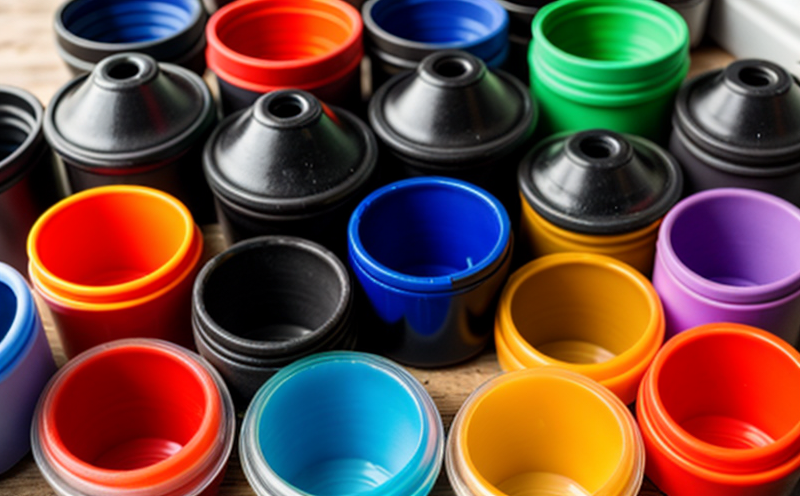IEC 60695 Fire Safety Testing of Recycled Plastic Components
The International Electrotechnical Commission (IEC) standard, IEC 60695, is a comprehensive suite of standards that addresses the fire safety aspects of electrical and electronic equipment. One critical part of this suite focuses on recycled plastic components used in these devices.
Recycled plastics are gaining significant traction due to their environmental benefits; however, ensuring they meet rigorous fire safety requirements remains paramount. IEC 60695-12-3 provides specific guidelines for assessing the flammability and flame retardancy of materials including recycled plastics. This standard is particularly important as it ensures that recycled components do not compromise the overall fire safety performance of electrical products.
The testing outlined in this section covers key parameters such as vertical burning tests, limiting oxygen index (LOI) measurements, and horizontal burning tests. These tests are crucial for determining how a material behaves when exposed to flames or heat sources. By adhering to IEC 60695-12-3 standards, manufacturers can ensure their products comply with international safety regulations.
The process involves meticulous preparation of specimens from recycled plastic components followed by rigorous testing under controlled conditions. The results provide critical insights into the combustibility and flame spread characteristics of these materials. Compliance with these tests is essential for maintaining product integrity while also ensuring user safety in potentially hazardous environments.
Incorporating recycled plastics into modern products offers numerous advantages, from reduced waste to lower carbon footprints. However, it's vital that any material used meets stringent fire safety criteria set forth by global standards like IEC 60695-12-3. This ensures not only regulatory compliance but also enhances the reputation of brands committed to sustainability without sacrificing product quality or consumer safety.
Understanding the intricacies of this standard is crucial for those involved in R&D, quality assurance, and procurement within industries reliant on electrical and electronic equipment. By leveraging cutting-edge technology and stringent testing protocols, companies can confidently integrate recycled plastics into their products while upholding high standards of fire safety.
Why It Matters
The importance of fire safety cannot be overstated in the context of electrical and electronic devices, especially when incorporating recycled plastics. Failure to meet stringent fire safety standards can lead to catastrophic failures, putting both consumers and manufacturers at risk.
Recycled plastic components must undergo rigorous testing to ensure they maintain comparable levels of performance and safety as virgin materials. This testing is essential for several reasons:
- Consumer Safety: Ensuring that recycled plastics used in electrical products do not pose a fire hazard helps protect end-users from potential accidents.
- Regulatory Compliance: Meeting international standards like IEC 60695-12-3 is necessary for compliance with various regulations worldwide, avoiding costly penalties and legal issues.
- Sustainable Manufacturing Practices: By integrating recycled plastics into products without compromising fire safety, companies can promote sustainable manufacturing processes that minimize environmental impact.
Thus, adhering to IEC 60695-12-3 not only enhances product reliability but also reinforces a brand's commitment to responsible and safe practices. This ensures long-term success in the market by building trust with consumers who value both quality and sustainability.
Scope and Methodology
The scope of IEC 60695-12-3 encompasses the evaluation of fire resistance properties, particularly focusing on recycled plastic materials. The standard defines the specific tests required to assess flammability and flame retardancy characteristics.
The methodology involves several key steps:
- Specimen Preparation: Recycled plastic components are carefully prepared according to specified dimensions and shapes recommended by the standard. Proper preparation ensures accurate and reproducible test results.
- Test Setup: Specimens are placed in a controlled environment where they can be exposed to various heat sources, including hot plates or radiant flames.
- Data Collection: During testing, critical parameters such as flame spread rate, smoke density, and heat release are continuously monitored. This data provides valuable insights into the material's performance under fire conditions.
The results of these tests determine whether recycled plastic components meet the specified criteria for fire safety. Compliance ensures that products remain safe even when exposed to high temperatures or electrical sparks, which is particularly important in applications where reliability and user protection are paramount.
International Acceptance and Recognition
- Australia: The Australian Standard AS/NZS IEC 60695.12-3 is adopted, ensuring that products meet stringent fire safety requirements recognized globally.
- European Union: Products conforming to this standard are eligible for CE marking, facilitating market access across the EU and beyond.
- Singapore: The Singapore Standards SS 291:2013 incorporates IEC 60695-12-3, making it a mandatory requirement for certain electrical products.
- USA: While not explicitly referenced in US standards like UL or NFPA, compliance with this standard is often recommended to ensure fire safety and international compatibility.
The widespread adoption of IEC 60695-12-3 underscores its significance in the global market. By aligning with these international standards, manufacturers can tap into diverse markets while maintaining consistent quality across regions.





